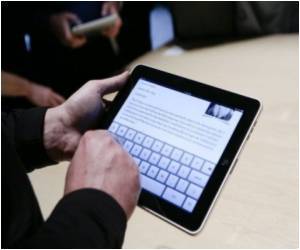
The talking touchscreens are currently being used in a Cancer Care Communication study funded by the Agency for Healthcare Research and Quality. Three Chicago-area cancer clinics for underserved populations are participating in the study to administer education material to newly diagnosed breast and colorectal cancer patients.
Elizabeth Hahn, an associate professor in the department of medical social sciences at Feinberg, developed the touchscreens as a tool to help end health disparities in underserved populations. Right now, the computer is capable of talking in English and Spanish. More languages may be added in the future, Hahn said.
This tool provides more privacy and allows people to complete questionnaires in their native language, at their own pace.
Hahn's current study includes up to 200 study participants. Half of the participants get standard booklets printed with educational information, the other half get that same information on the multimedia talking touchscreen.
Hahn said: "Our goal is to demonstrate that information from a multimedia touchscreen can improve satisfaction with communication, knowledge, self-efficacy and adherence to treatment compared to information provided in standard booklets."
Advertisement
In the future, Hahn hopes that every clinic waiting room will have talking touchscreen technology. After registering at the front desk, a patient could sit at the kiosk, complete questionnaires, access health information and even feed their data into an electronic medical record.
Advertisement
Source-ANI











